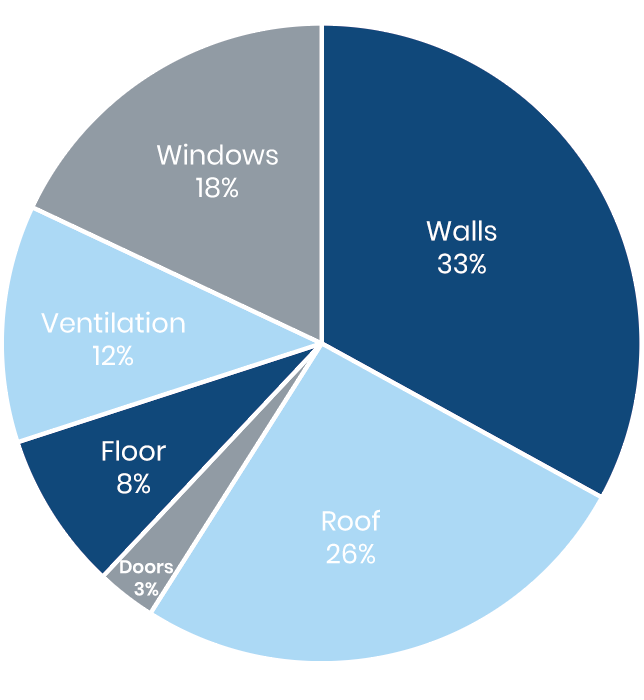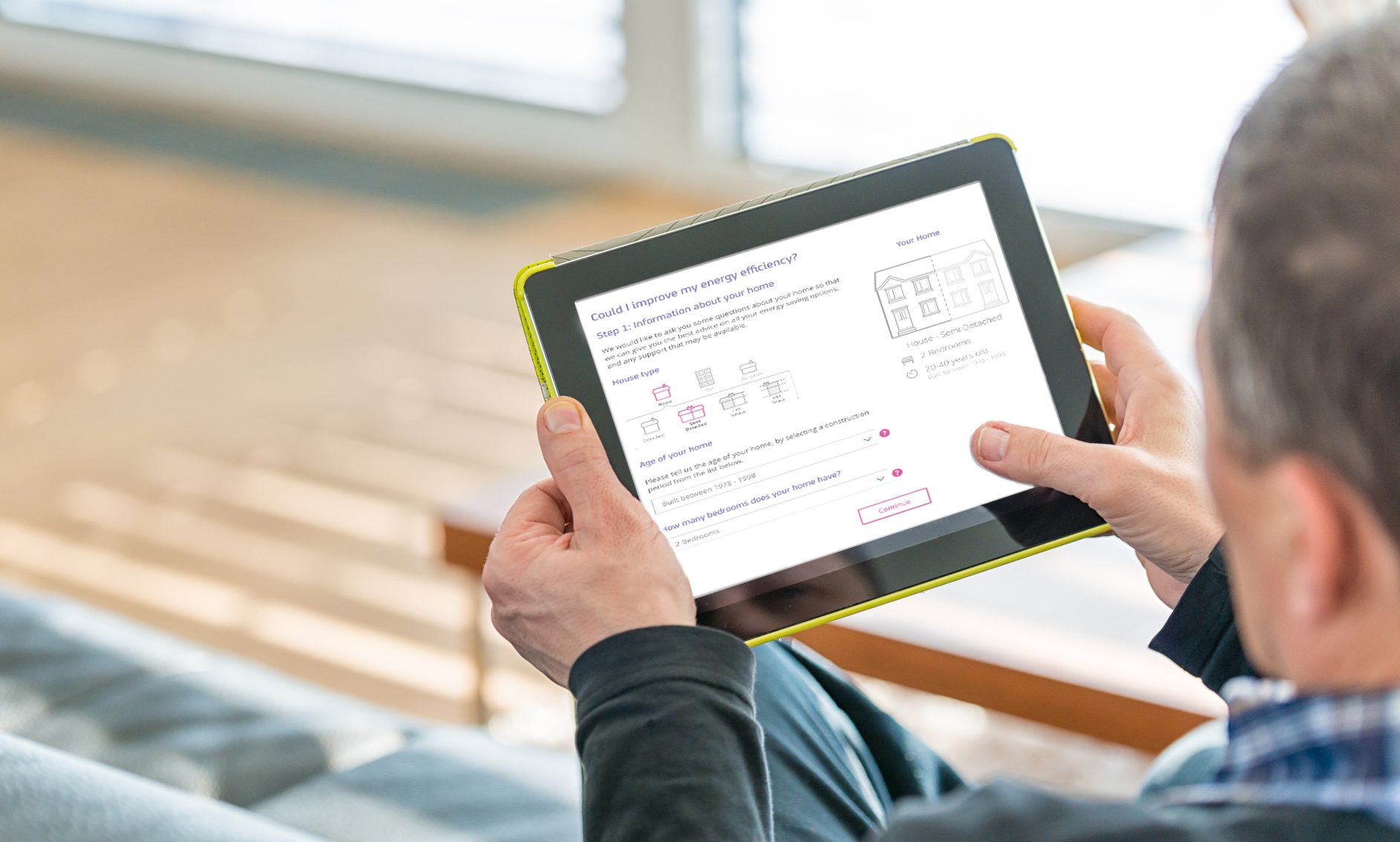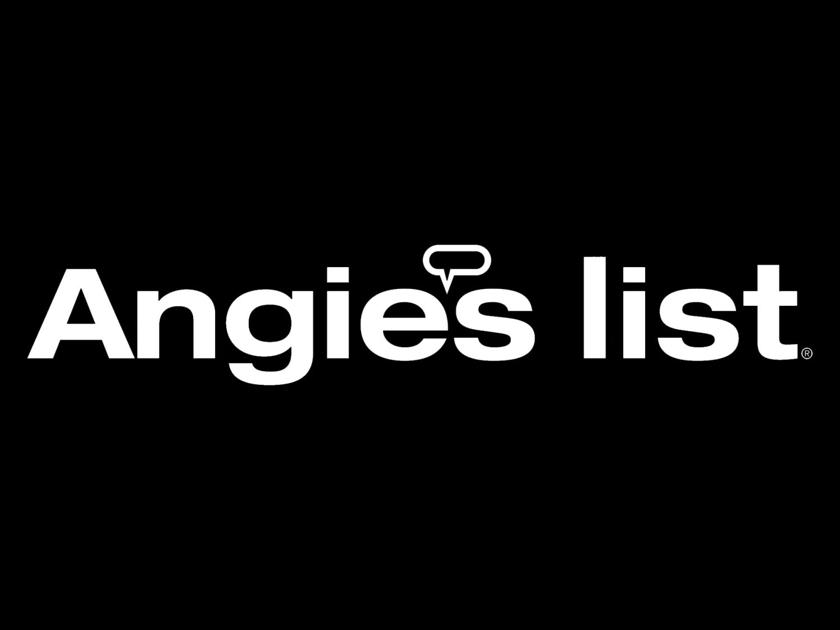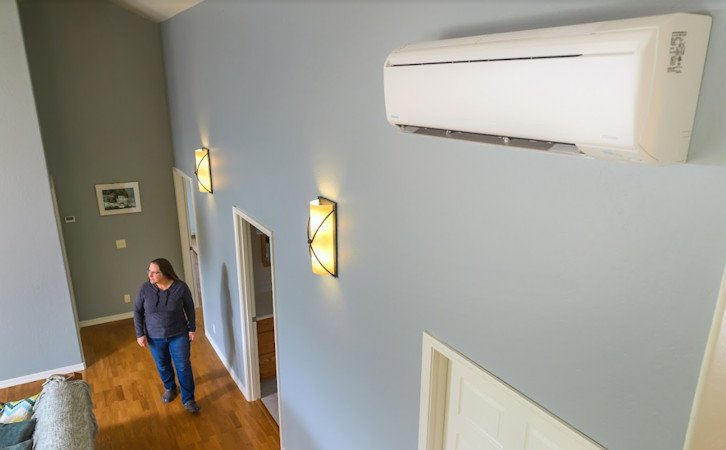Why customers make home energy improvements – Energy Saving Trust
Energy Disrupter
Saving money on energy bills isn’t the only reason people decide to carry out home renovations, but perhaps it’s one of the most important for homes with poor heating and insulation.
They might also be encouraged to make changes due to expensive heating bills, damp walls, draughty rooms or even influence from current news about the climate emergency. There are also attractive incentives in the form of government grants or financial support.
As Covid-19 lockdowns have forced us to remain indoors for lengthy periods of time, homeowners have had a great opportunity to think about their homes – whether that’s their ageing appliances, outdated heating systems, poor insulation or windows that need double-glazing.
It can take up to 65% of an average household’s energy use to heat the empty space in rooms. If your customer’s household can’t keep the heat in, they will be wasting more energy than necessary. Home improvements can be a considerable investment, but they will save money and carbon emissions in the long run.
Speaking to eco-conscious customers
Today, eco-friendly purchases are far more common, while most new appliances come with labels letting people know how much energy they use. With the rollout of smart meters, residents and homeowners are now more aware of their energy use. However, they tend to be less conscious of the heat loss rates within different areas of their homes, as a result of poor insulation or inefficient heating systems.

*For more domestic home energy facts, ask us about the InFact Savings and Statistics Bulletin.
Every action you take has a carbon footprint – whether it’s scrolling through social media, sending an email, or streaming a film on Netflix. Data centres containing, receiving and sending this information use electricity. But that’s still nothing compared to the energy needed to heat homes; in fact, 27% of UK’s total carbon emissions from energy supply (including heating) are from domestic households.
When households use less power, the power plants delivering the electricity and gas to homes via the grid produce fewer carbon emissions. These green-house gases negatively impact climate change – with excessive global energy use harming animals, ecosystems and biodiversity. While the UK’s share of renewable electricity generation reached 45% this year, that’s still over half the UK’s generated electricity that uses fossil fuels, which can in turn destroy and damage wildlife habitats on land and in the ocean.
Most of your household energy is used to heat up empty space in rooms to maintain a pleasant ambient temperature all year around. For the eco-conscious among your customers, what reasons are there to cut down on energy use?
- it can reduce reliance on fossil fuels used to produce electricity
- it can help save wildlife habitats, protecting many endangered species
- it can help combat climate change
Speaking to fuel poor households
The poorest households tend to be the ones paying the most in energy bills. Governments have pledged to reduce the amount of homes struggling to pay energy bills, and those in fuel poverty through schemes and grants with both short-term solutions, such as the Warm Home Discount Scheme, and more importantly long-term solutions, such as the Green Homes Grant Scheme.

Helping point to long-term solutions that will reduce energy bills – in particular, home improvements supplemented by grants – is a good strategy to increase customer engagement with your brand and improve your brand’s standing.
However, for many homeowners, knowing where the most efficient and cost-effective area to start effective home improvements is often a barrier. This is where you can support your customers at home. For the energy-conscious among your customers, what reasons are there to cut down on energy use?
- it can save money on energy bills
- it can improve the value of homes by improving EPC ratings
- by keeping heat in, it can make the home more comfortable during colder months
Where do you start if you want to engage and support your customers?
If you want to increase customer engagement and give them verified ways to improve the energy efficiency of their home, you can’t do much better than have the Home Energy Efficiency Tool plugged into your website and under your brand. This empowers your customers to discover information about their home, at the same time as putting the potential costs and savings right in front of them. They will then be able to view an action plan that suits their home and budget.

Get in touch with us to request a free demo of the Home Energy Efficiency tool – our informative home energy usage calculator can calculate the savings any householder could make by investing in home improvements such as roof insulation, smart heating controls or air source heat pumps.
If you’d like to increase the effectiveness of your customer engagement when it comes to energy efficiency or renewables, our research and insight teams would love to work with you.
Original Source: https://energysavingtrust.org.uk/whats-driving-your-customers-to-make-energy-efficient-home-improvements/
















